Genre: Light Gun Developer: AM2 Publisher: Sega Players: 1-2 Released: 1995
Let me get one thing out of the way first: I absolutely love this game! When the turn of the millennium and the arrival of the sixth generation of consoles rolled about, I felt very hard-pressed to get rid of my Saturn console and my still rather meager collection of games for it. Three things I owned kept me from doing so, however: My copy of Virtua Cop, and the two light gun controllers I owned. Only a few years ago, setting up a Sega Saturn running Virtua Cop at a retro gaming fair drew masses of players from all ages to the console, some waxing nostalgic, but the younger ones were particularly amazed that such a smooth light gun experience was created back in the mid-’90s! So, if my review seems a little less balanced than my usual fare, I hope you’ll see where I’m coming from with this.
Anyway, light gun shooters are even older than video games themselves. When I was a kid, one of my favorite attractions at the local fair that came into town twice a year was a shooting gallery in the style of an old western saloon. It was filled with animatronics that moved or played sounds when they were hit in the right spot. If you’d literally shoot the butt of the piano player for example, he started playing a little tune. The technology was also easy to implement even for the earliest of home consoles: The Magnavox Odyssey already had a light gun peripheral (shaped and sized like an actual shotgun, no less).
Over the years, light gun shooters evolved. The earliest examples were simple and static single-screen shooting galleries, where you simply tried to shoot as many targets as possible in a given amount of time. Then came games like Wild Gunman which sort of included a life system, where you also needed quick reflexes before the target could “shoot back.” In the ’80s, games like Operation started to put the action on rails, adding scrolling and a feeling of player movement into the mix. By the time the ’90s rolled about, game creators tried to make action more life-like, mostly by using digitized actors as sprites (Konami’s Lethal Enforcers comes to mind) or by turning the entire game into an FMV experience where you can shoot the “bad guys” in predetermined sequences, with the occasional randomized video thrown in to keep things more interesting (Mad Dog McCree or Corpse Killers would be good examples of those). However, all sprite movement aside, those were still relatively static experiences. You either hit or miss – you had no idea where or how well you’d hit the target. Since there were no hit zones, sprites generally only had one hit animation that got played over and over again over the course of the game, leading to heavy repetition and dulling the experience.
The arrival of Virtua Cop, however, marked a major turning point in the entire light gun genre. Many of the elements now commonplace in modern light gun shooters were first introduced here. Instead of sprites or pre-set movie clips, the game used the same polygon library as Virtua Fighter 2 and introduced 3D-modeled characters into the fray – hence the “Virtua” part of the title. More than that, these models also possessed hit zones and reacted differently depending on which hit box was triggered. Shoot an enemy in the leg, and he stumbles and falls. Shoot him in the gun arm, and he holds the injured limb, unable to continue. Shoot him in the head, and he drops like a sack of cement. This also meant that you could shoot them several times, each hit resulting in a corresponding, ragdoll-like animation. Hit some exploding scenery, and the resulting shockwave may or may not take out enemies surrounding it, depending on the movement and location. All this lead to a much smoother and realistic gameplay experience, making everything that came before feel jerky and lifeless by comparison. The movement of the first-person-viewpoint still was on rails, but with a more versatile motion and its occasional bobbing and weaving of the camera it felt significantly more natural than the strict single line directions previous games of this ilk had to offer.
Other tropes of the genre remained unchanged. You start the game with a regular revolver containing six bullets. Once the barrel is empty, you need to reload, which is accomplished by pointing the gun away from the screen and pulling the trigger (I personally took to using a sort of Tarantino-style of playing the game, holding the gun at an angle, firing three or four shots in quick succession, then quickly flicking the wrist up to reload and immediately have the gun “drop down” back into the play area. To me, at least, it felt faster than constantly having to move the gun to the sides or down and back again). Sometimes, objects like crates or barrels can or even have to be shot (or get destroyed by an enemy dramatically crashing into them), revealing new weapons that can be picked up by shooting them, each with different qualities: The automatic is similar to the standard gun but with a clip of 15 shots instead of the regular six, a rifle fires bursts of three shots with each pull of the trigger, the shotgun has a slightly bigger hit zone than the other weapons, the magnum allows you to hit enemies through obstacles that would otherwise block your shots, and the machine gun fires a steady stream of bullets when you keep the trigger pulled (with is relatively useless, since its rate of fire is much slower than if you’d just pull the trigger manually). Get hit once, and your gun reverts back to your comparatively weak standard revolver.
Occasionally, a hostage runs across the screen, pops up behind a cover, or gets dragged into the screen by an enemy. If you accidentally should those, you lose a heart from your life meter. Run out of hearts, and you lose a credit. Run out of credits, and its “Game Over.” Enemies that carry guns get highlighted by a lock-on-sight that changes color depending on how soon he is about to fire; if he’s not ready, the sight is green and if he’s about to shoot, it rapidly flashes red. Needless to say, the more the game progresses, the less time enemies take to shoot . By stage three, the sight is basically always orange-to-red, all the time.
Story-wise, Virtua Cop doesn’t offer much to write about. The players are police officers Michael ‘Rage’ Hardy and James ‘Smarty’ Cools – that covers the “Cop” half of the title – who are investigating a weapon smuggling ring (which explains all the heavily armed opponents). In best SEGA naming tradition, the smuggling organization is run by the sinister corporation E.V.L. Inc. Technically, the player using controller one is always Rage while player two always takes over as Smarty. It doesn’t make any difference in single-player mode, but with two players the number of enemies on screen increase significantly.
The game is parted into three different areas, each of which concludes in a boss fight. Stage one, the harbor, is the easiest section and is followed by a more challenging quarry (or, as the game calls it, “underground weapon storage”). The game finally culminates in the hardest stage, the E.V.L. Inc offices (or gang headquarters, though I’d assume that once you can afford your own high rise buildings you’ve long since surpassed the gang stage of crime). Depending on your skill level and in true arcade fashion, you can decide to immediately skip to the hardest stage three from the start of the game. However, if you play all three stages in regular succession, a final fourth boss fight occurs after beating the stage three boss (aptly named Boss, who breaks the otherwise relatively realistic game by facing you in his personalized battle tank in his high rise office). The other bosses, by the way, are called Kong, King, and Fang, the last of whom fights you in his own attack helicopter, which of course you get to shoot down with your standard service pistol).
The Sega Saturn version is pretty much arcade perfect, with smooth scrolling and great handling if you use a Virtua Gun controller (or “Stunner,” as it was known in North America). The console port also supports gamepads and the SEGA mouse, which actually enables a minor cheat. If you start a game with a gamepad or mouse plugged in, then pause the game and replace the controller with a light gun, you still retain the aiming reticule these other control options provide. The game has an excellent soundtrack and pulls of some great sound effects (although to be fair, the few voice samples present are a really hard to make out).
The downside is that the Saturn port doesn’t really offer any extras over the arcade original. Options are limited to an arcade mode, a shooting gallery for training your aim, and direct access to the settings menu, where you can calibrate the gun or adjust the overall difficulty and number of starting hearts and credits. With the exception of the four bosses and a few neat but minor environmental hazards in stage two, where you’re being attacked via heavy construction machinery, there are only three different enemy types. Sporting only cosmetic differences, there are just gunmen, hatchet-wielding melee attackers, and opponents who throw projectiles like hatchets or grenades from behind cover (which you can shoot out of the air). The game doesn’t offer any additional content over the arcade version. Well-versed players can breeze through its three stages in 30 minutes or less. Even so, Virtua Cop remains fun enough to pick it up for short bursts time and again, and the short playtime works in the its favor in so far that the game won’t last long enough to overstay its welcome.
If you own a Sega Saturn, then Virtua Cop is a game you must have, as long as you also have a proper light gun AND a CRT TV. Since the Virtua Gun/Stunner (was well as third party equivalents for the Saturn) uses the classic cathode ray timing method to determine the position of a light gun “hit” on the screen, the gun controllers won’t work with modern LCD, OLED, DLP or plasma screens. Technically, you can still play the game with a regular gamepad or a mouse controller, but that way the gameplay feeling takes a major hit. Using a light gun is way more responding and feels significantly more authentic than a mouse or a way-too-slow-to-react gamepad can ever emulate. So dock two points if you have to play with a mouse or three or four if you’re stuck with a gamepad. But if you own the right accessories, then light gun games simply don’t get better, especially not on the Saturn… except for the games SEGA decided to follow it up with.
Score: 9 out of 10

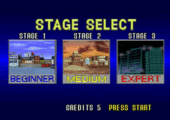
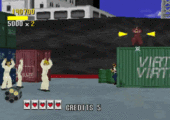
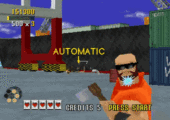
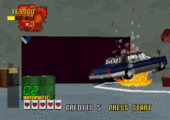
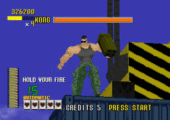
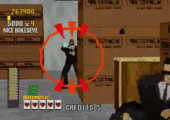
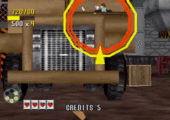
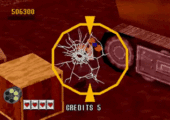
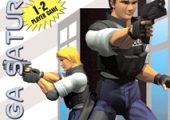
This was a great, if not pretty much totally arcade perfect port, and the main reason to own a Saturn in it’s early days. The second Virtua Cop was very well done on the console too, even if it wasn’t quite that like the first game was on it though.